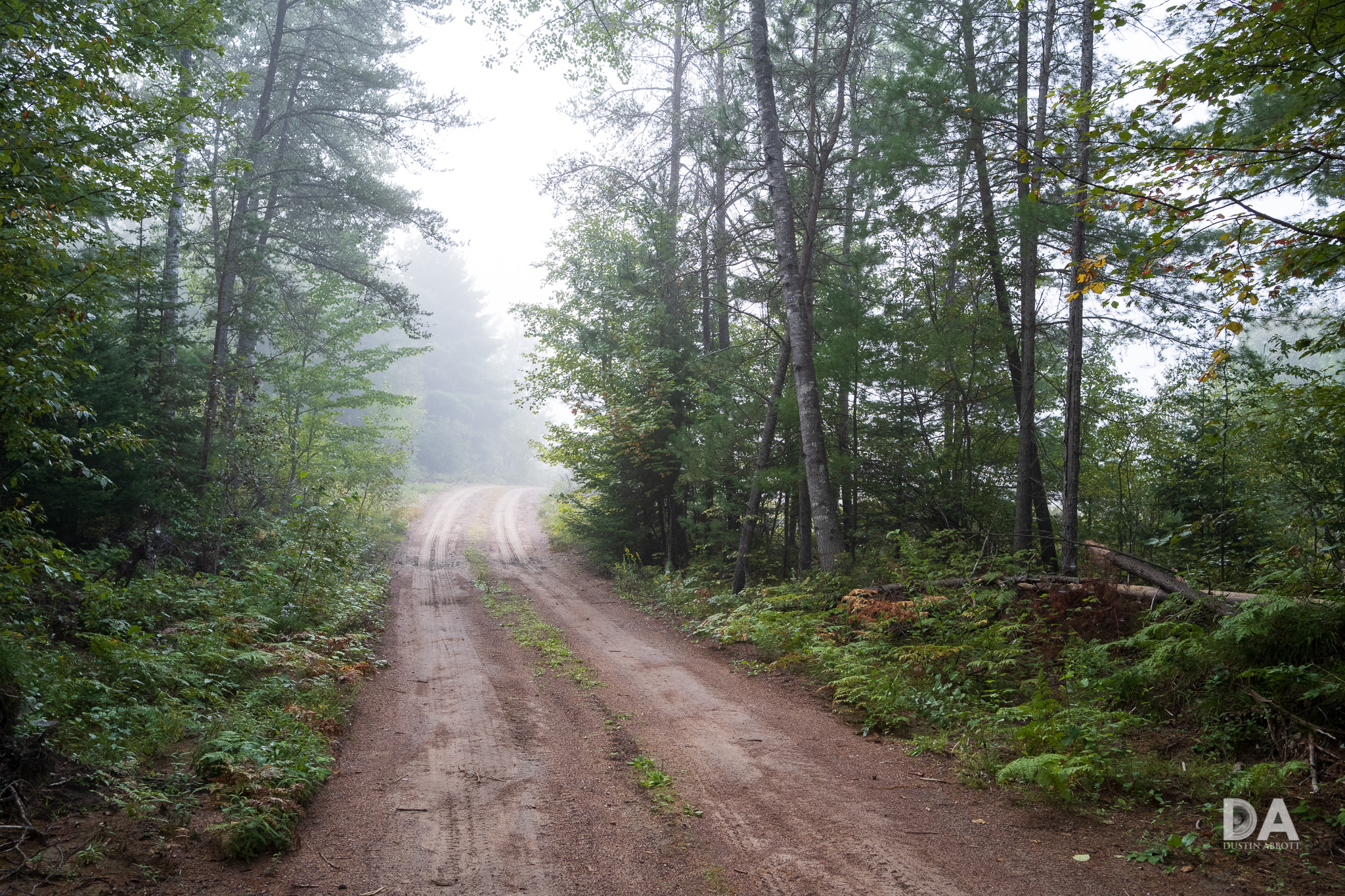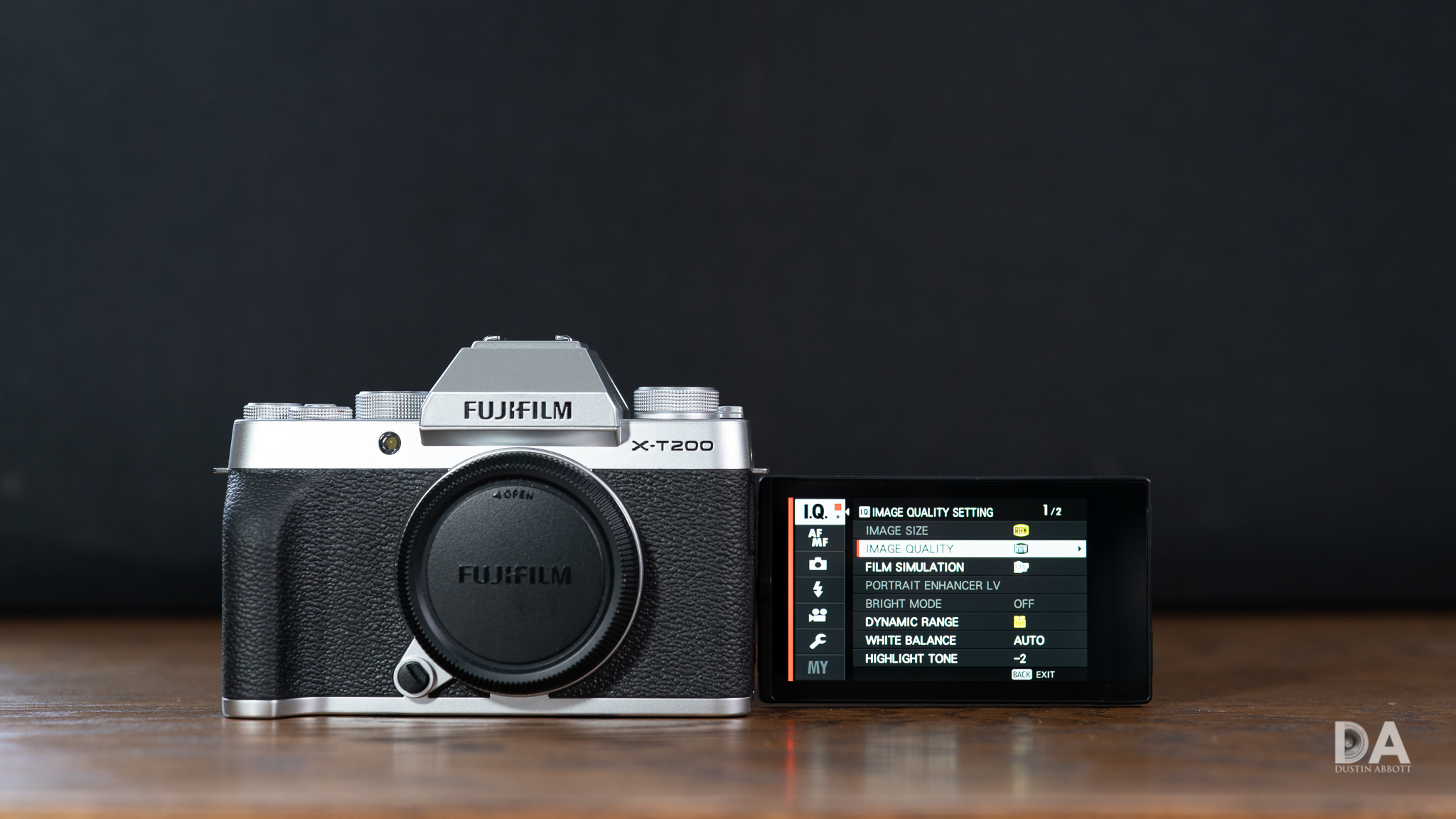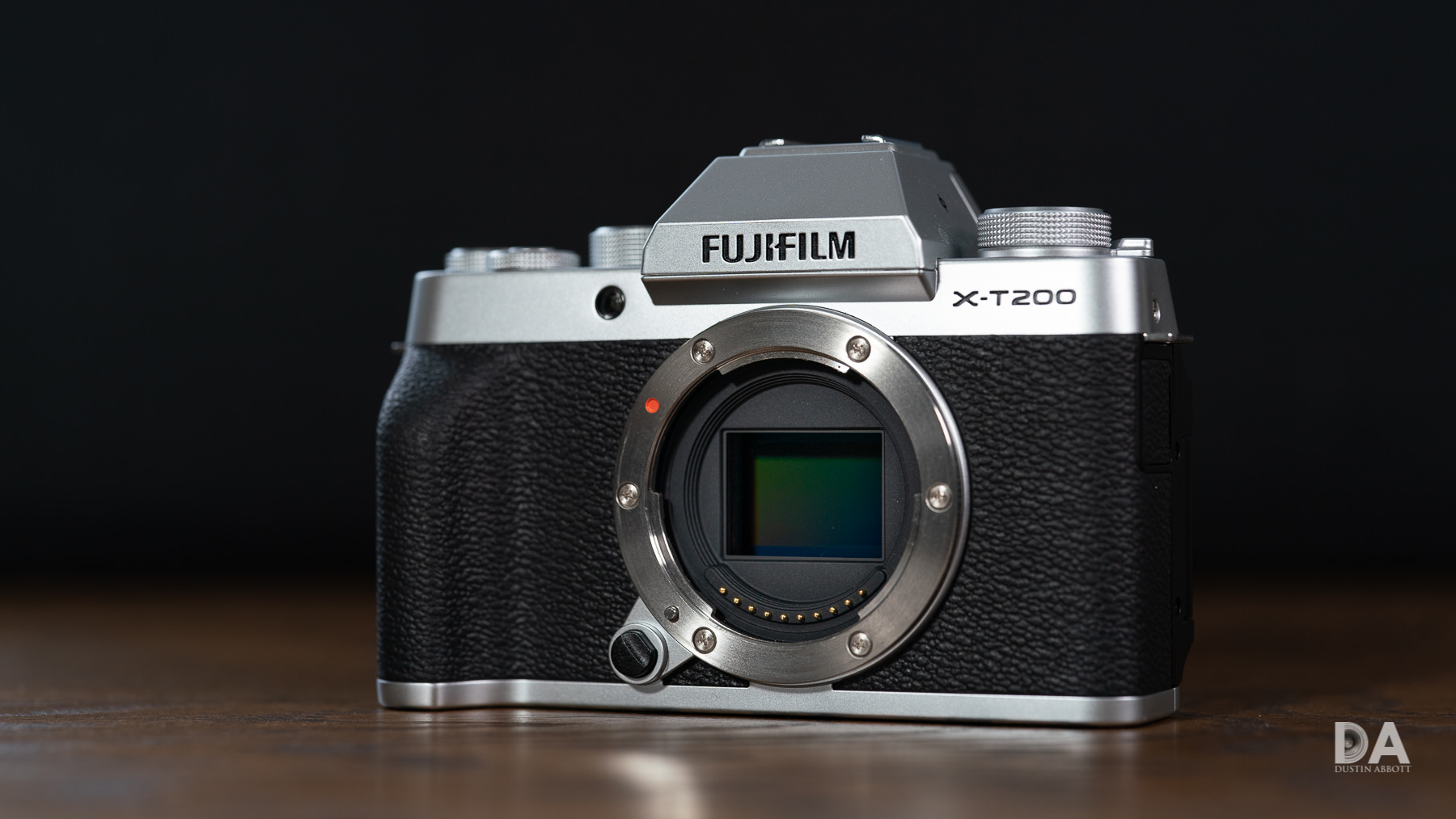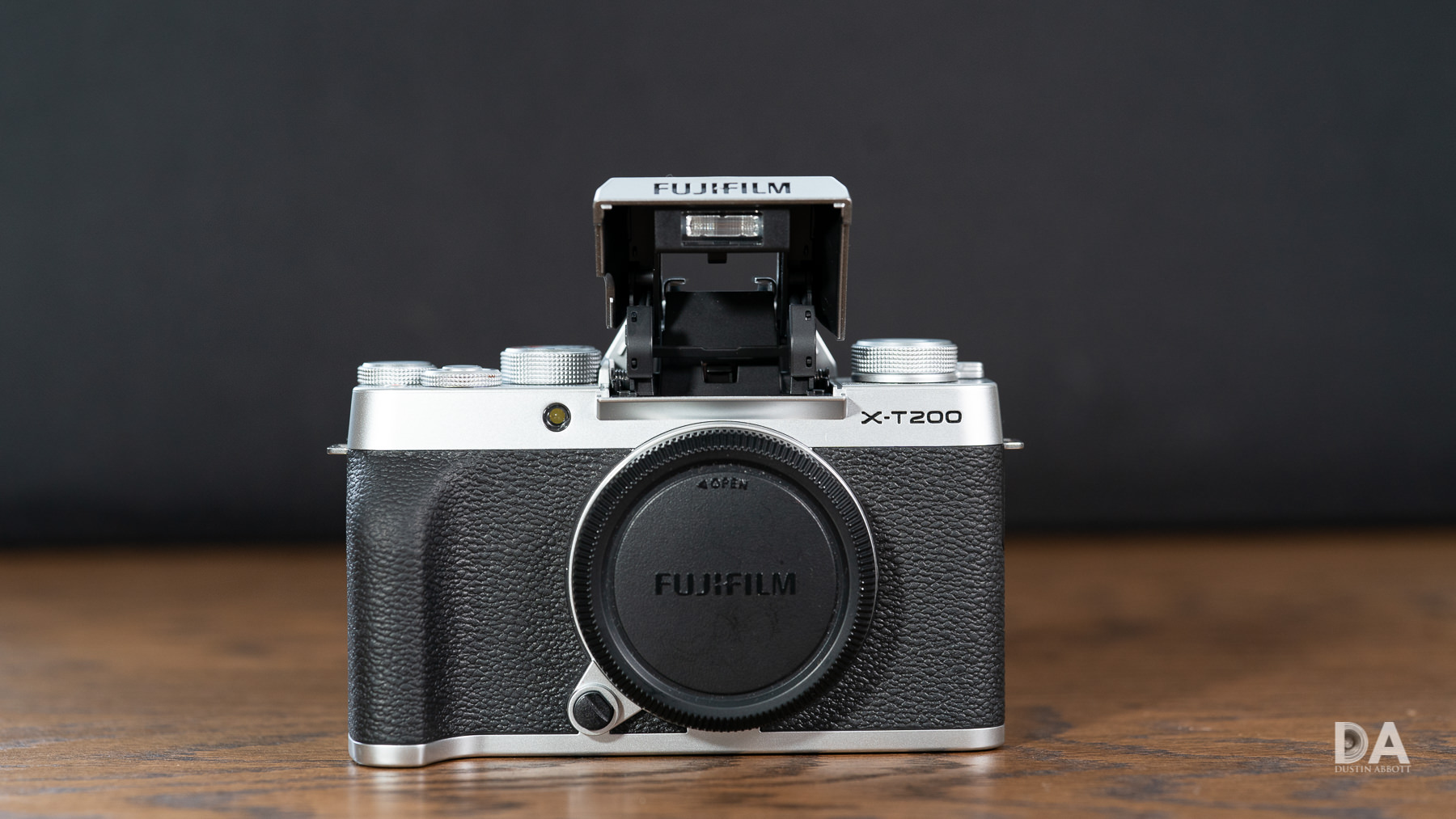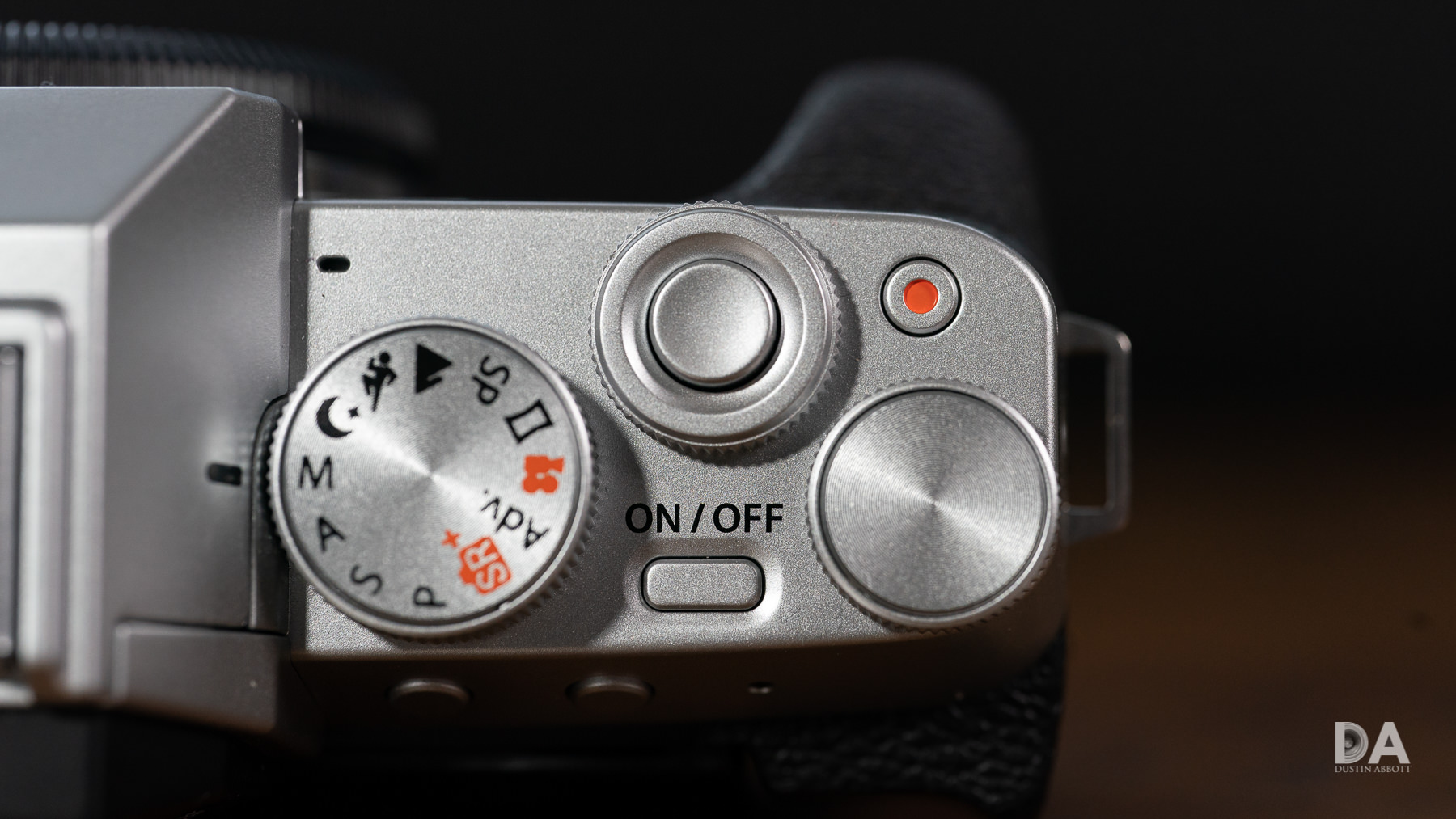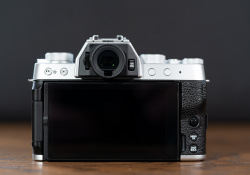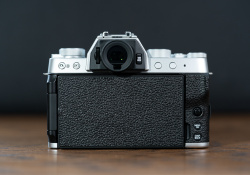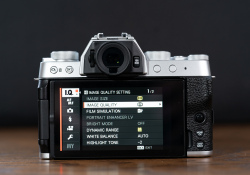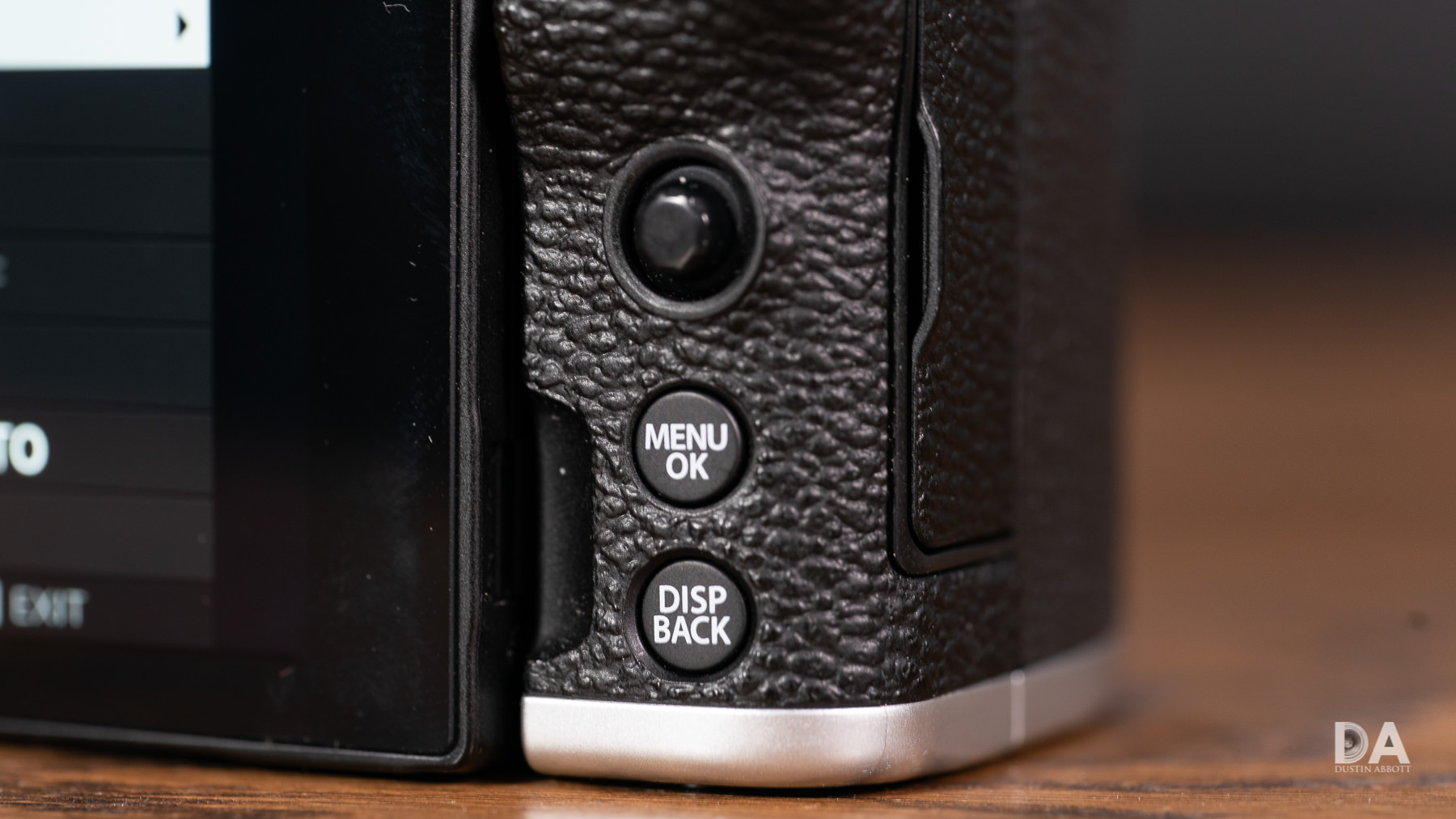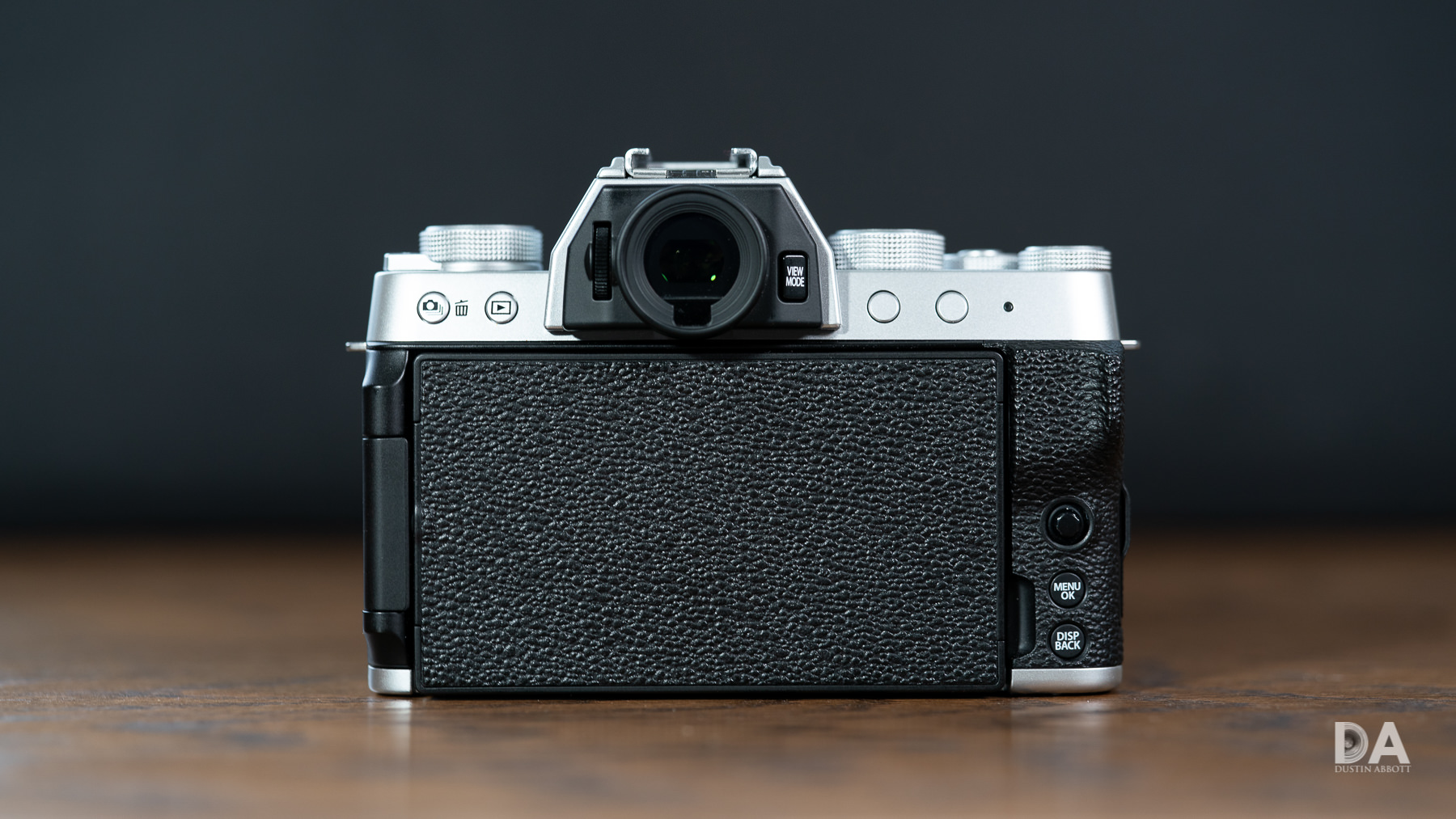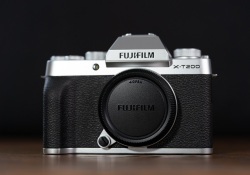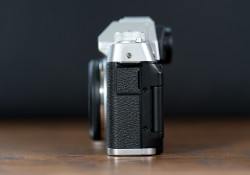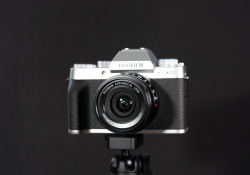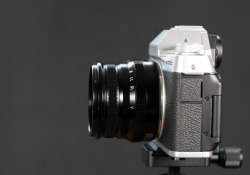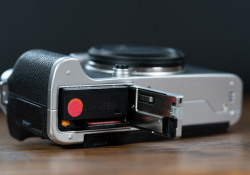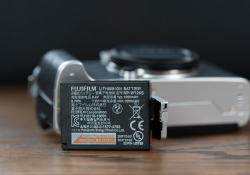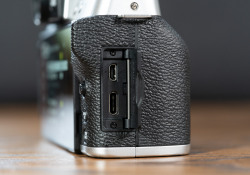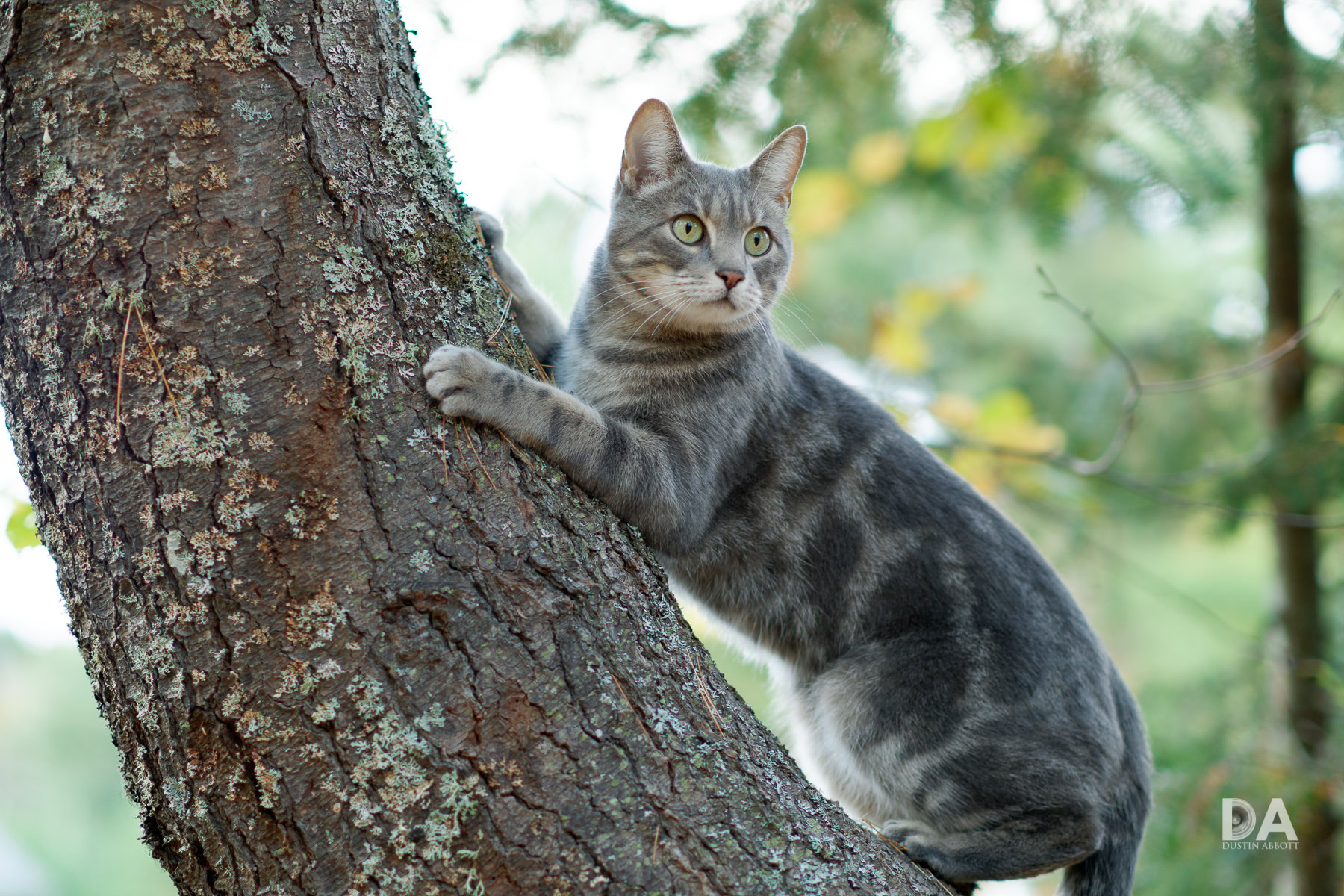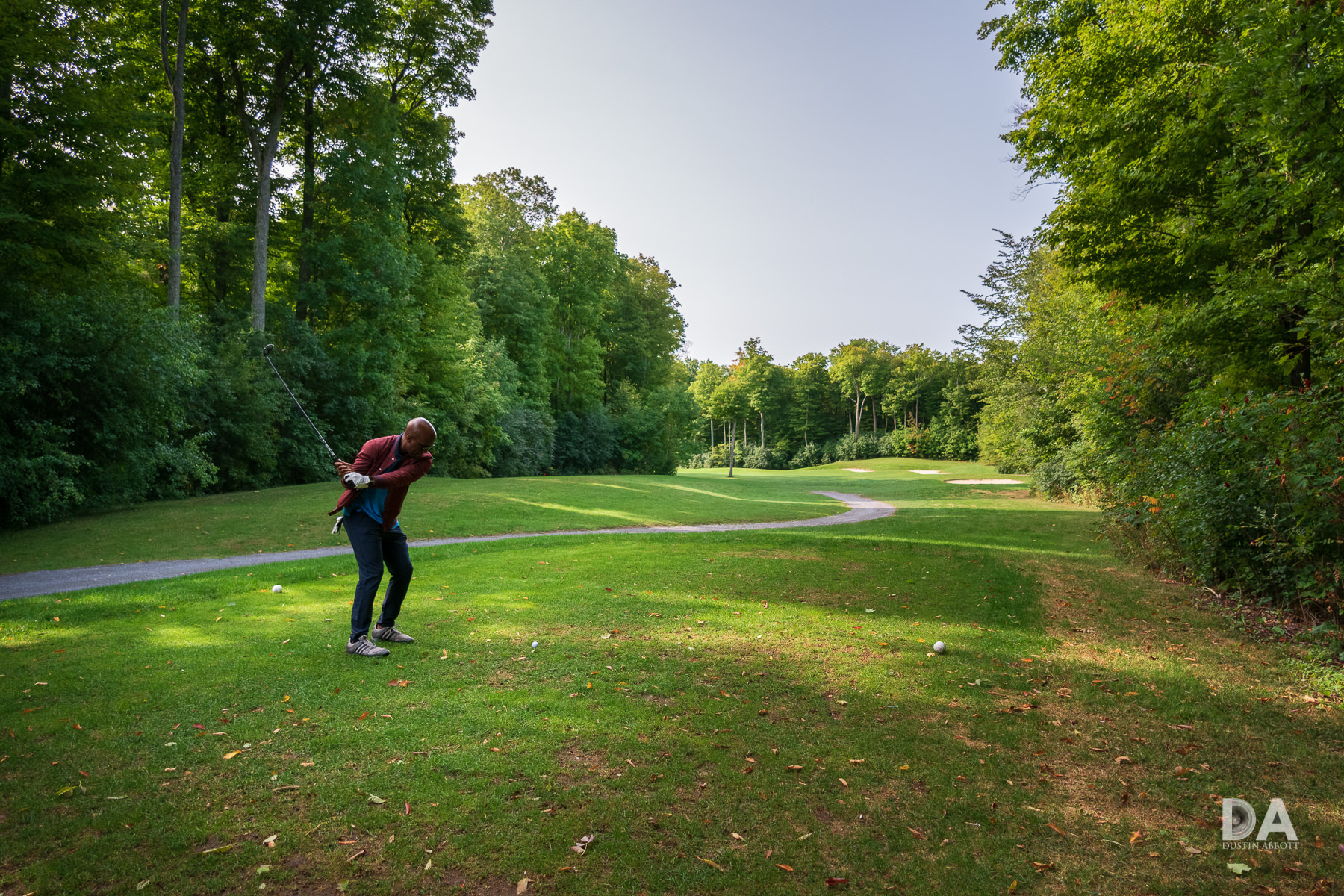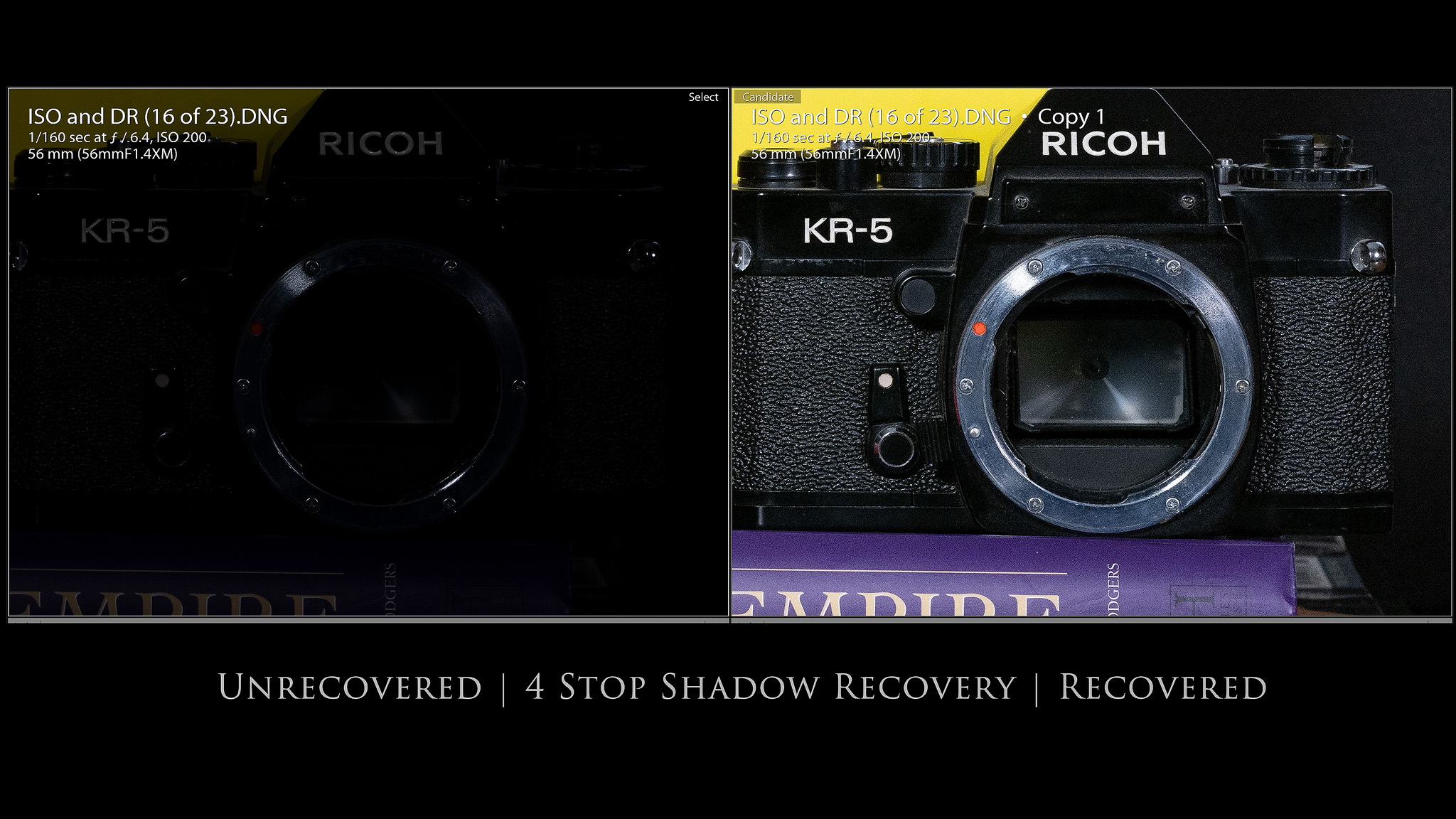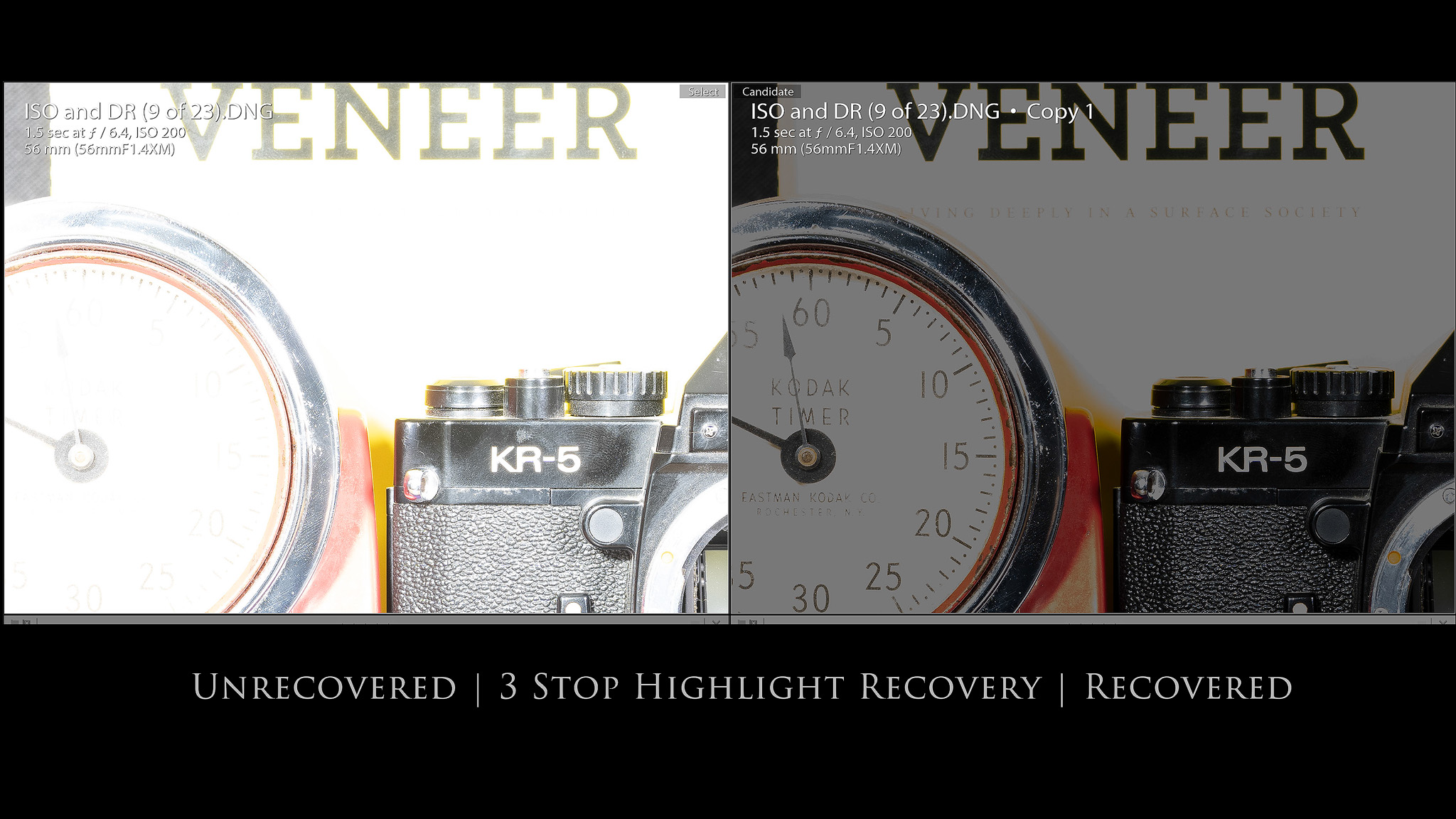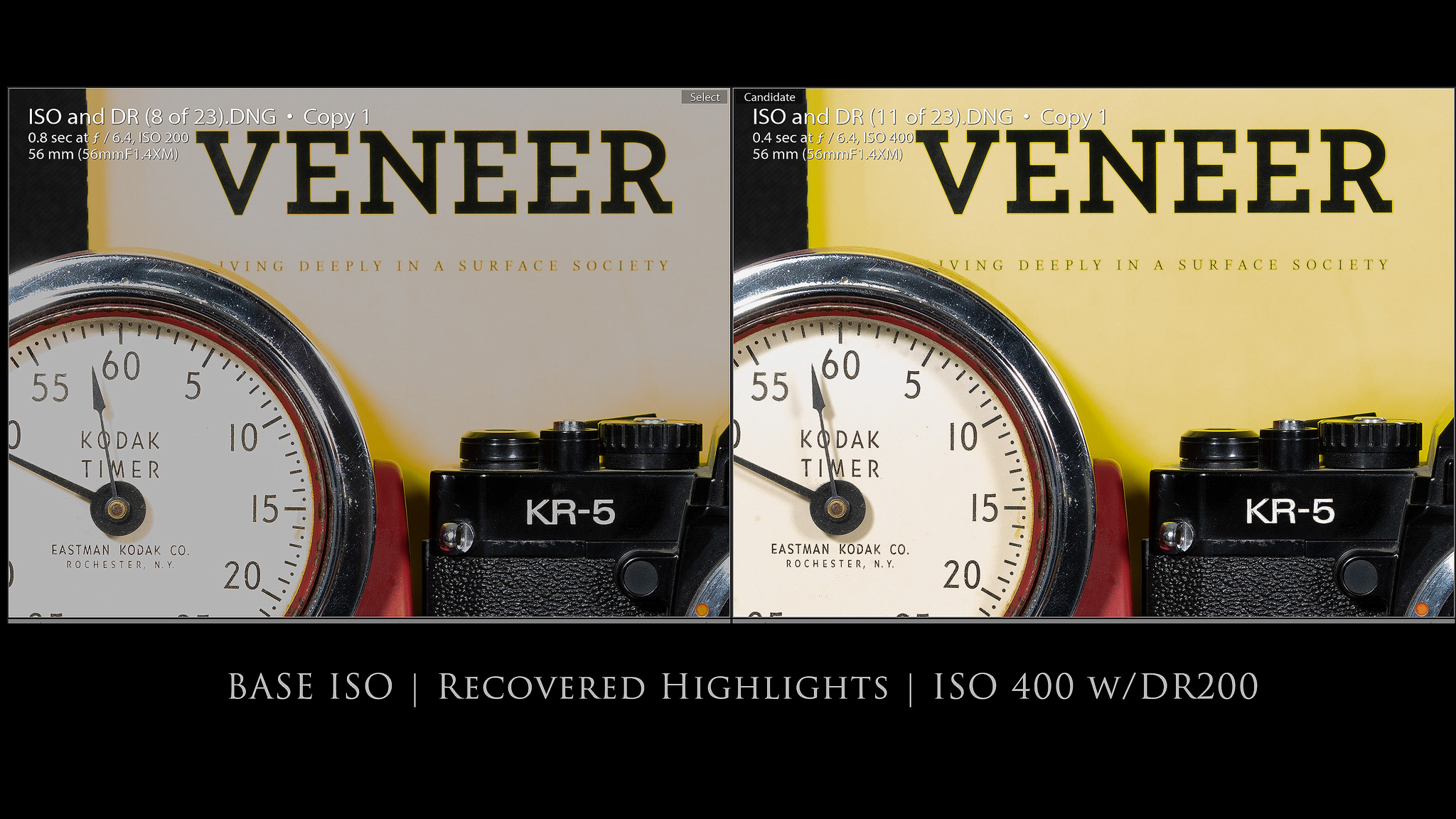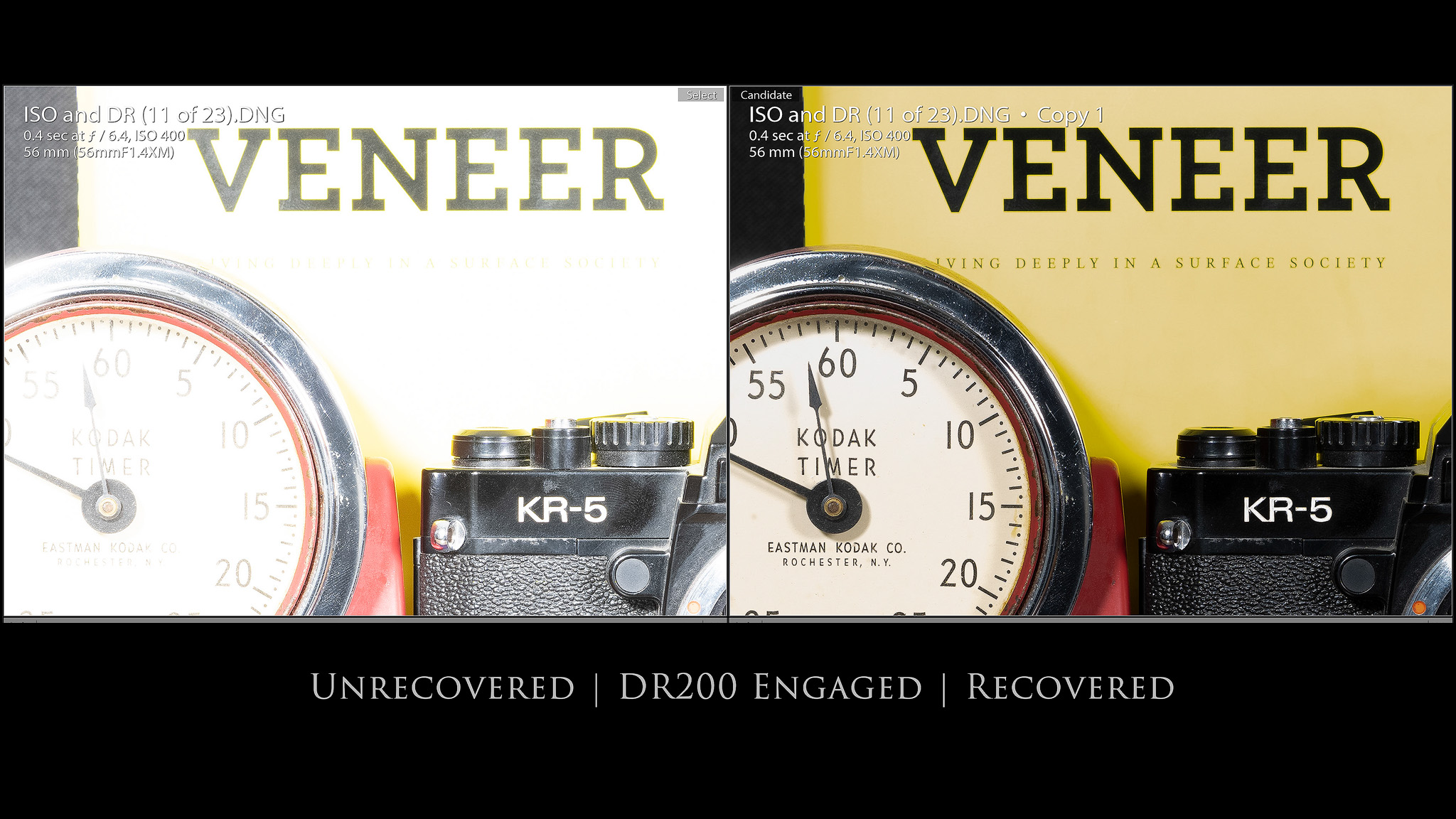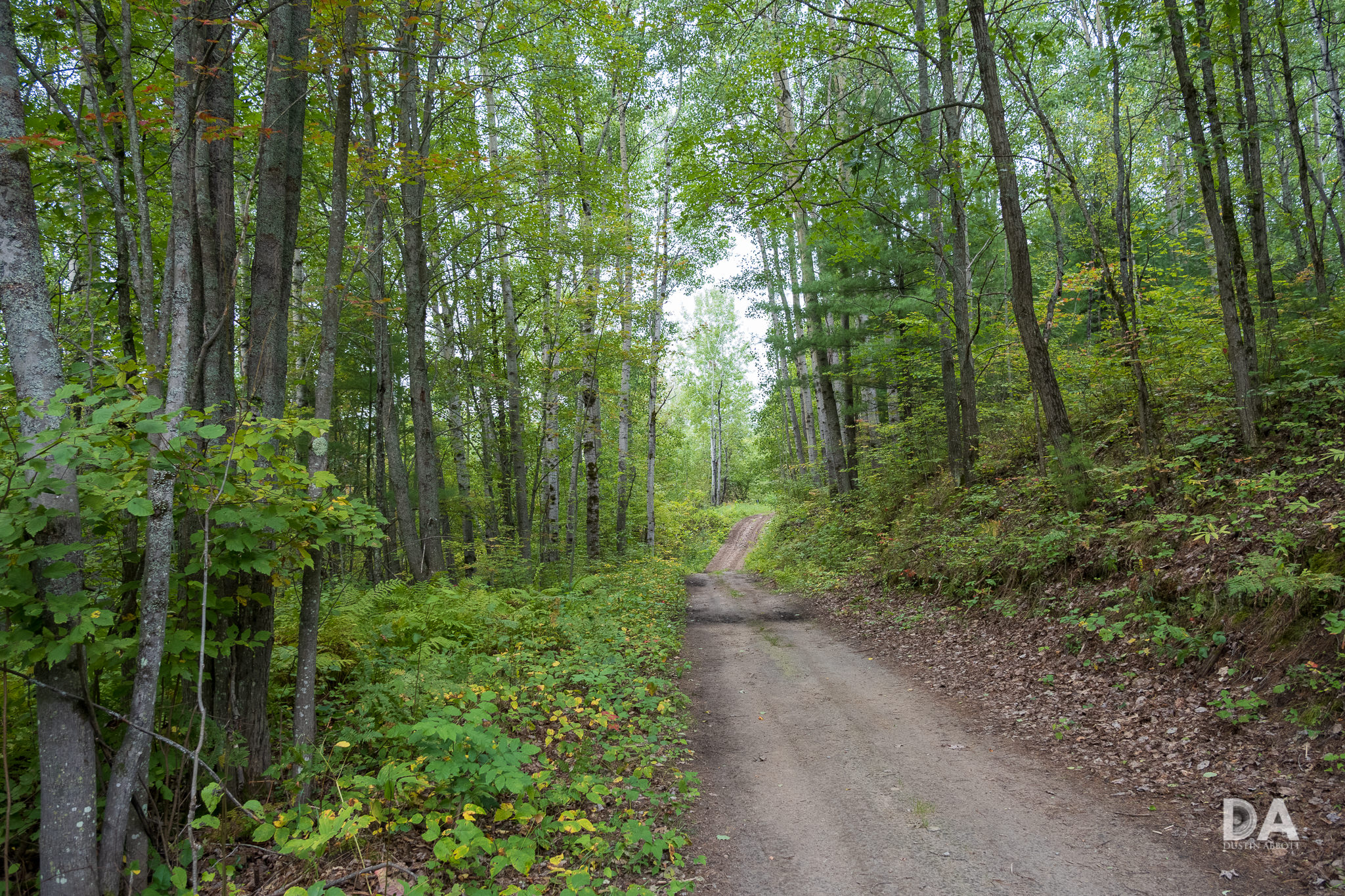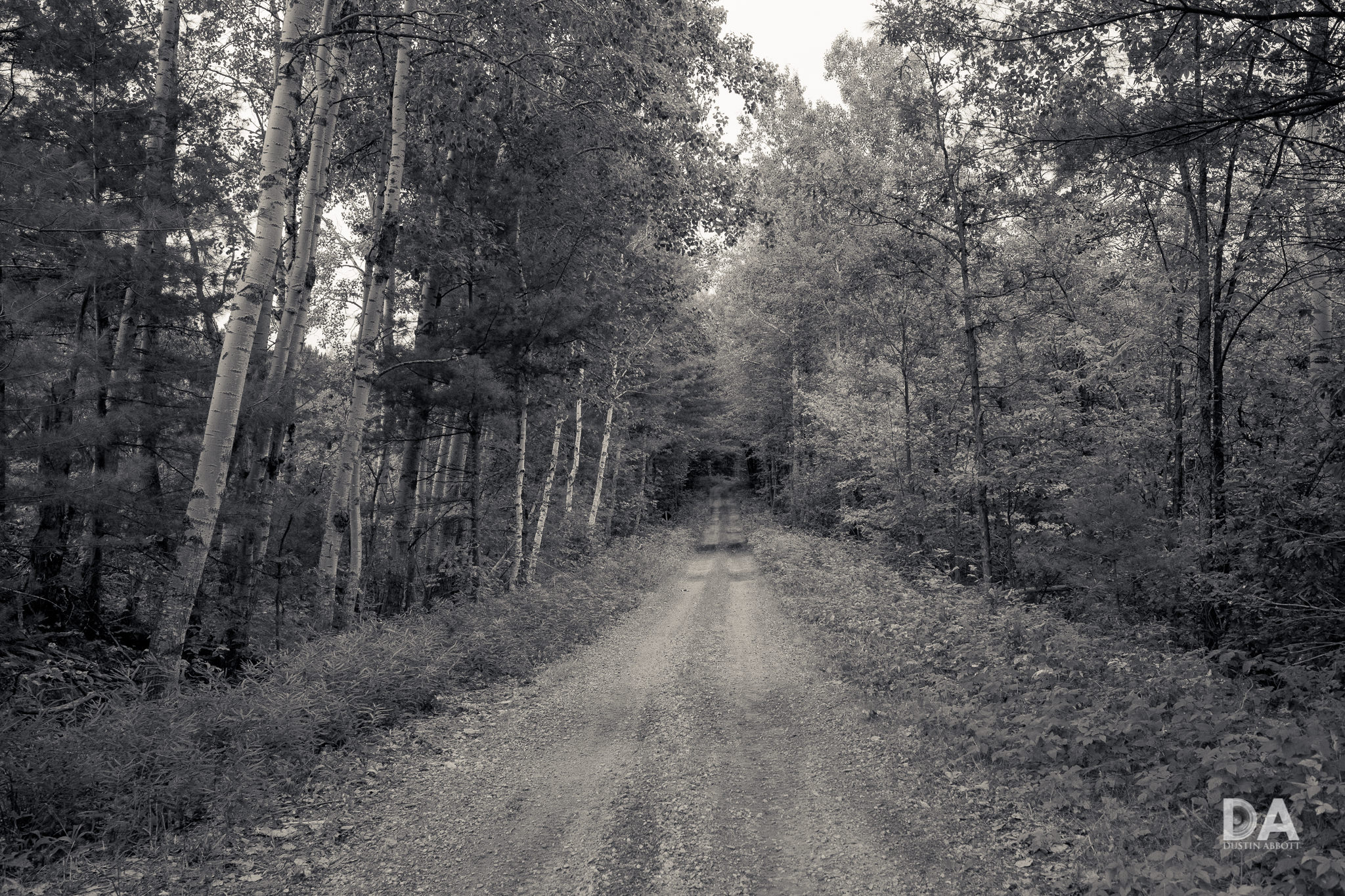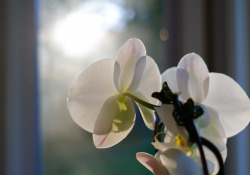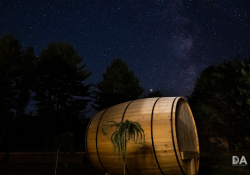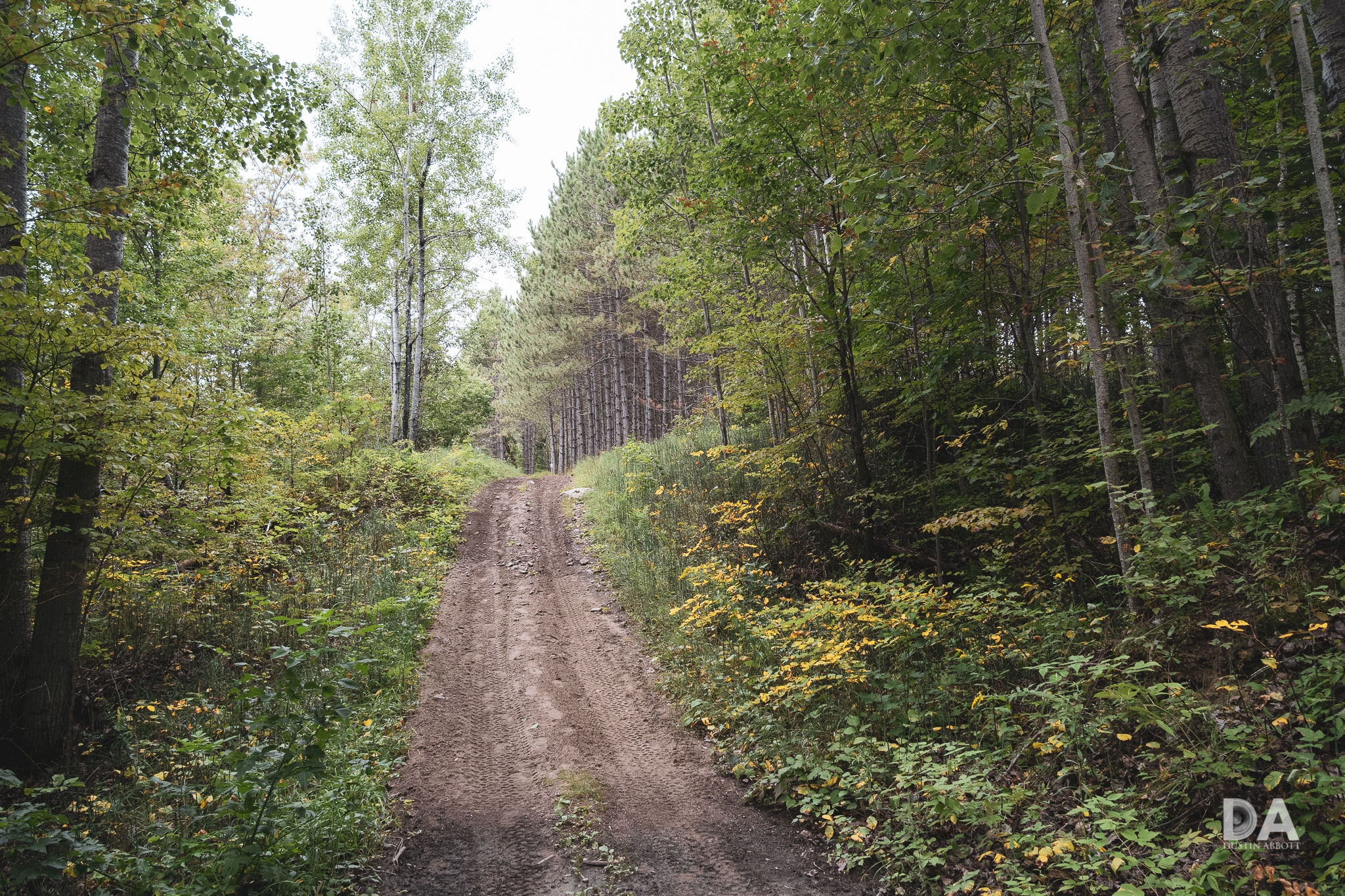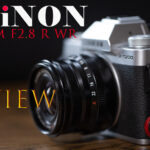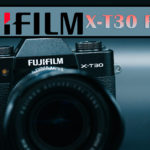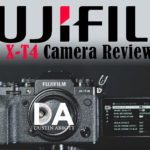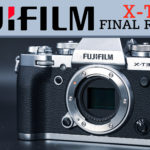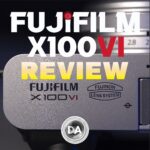I’ve been working over the past few years to get up to speed with Fuji’s ecosystem, as I had next to no experience with the platform when Fujifilm Canada approached me with the idea of starting to review Fuji gear. Over the past few years I’ve reviewed four different cameras and roughly a dozen lenses, so I have a lot more familiarity with the system. A lot of Fujifilm’s focus is on the premium end of APS-C, as this is a niche that few others compete in. Cameras like the X-T3 and X-T4 are among the most expensive APS-C cameras I’ve ever reviewed…and that includes DSLRs. There are a number of Fuji lenses that I’ve reviewed, like the 200mm F2 ($6000 USD) and the 8-16mm F2.8 ($2000 USD) that come in at price points higher than any other APS-C specific lenses I’ve previously reviewed. While lenses like this are important to serve existing Fuji customers, it is highly unlikely that the typical consumer looking for premium gear is thinking APS-C rather than full frame. There are many people, however, that have much smaller budgets and are interested in some of the unique features that Fuji offers (color science, film emulations), and appreciate the classic charm of Fuji’s often retro designs. That means there is a lot of room for a lower end camera from Fuji that inherits a lot of the higher end features found on the X-T3/4 bodies. That camera is the Fujifilm X-T200, a second generation of Fuji’s attempt to build a bargain camera with just enough features to satisfy a particular audience who want to be able to make beautiful images without breaking the bank.
While I have not reviewed the X-T100 in the past, my understanding was that it was a very promising camera that was let down by its performance. Fuji has worked to make sure that isn’t the case here, so the X-T200 is in many ways a slightly watered down version of their more premium cameras. Here’s a look at the headline features:
- 24MP APS-C sensor with Bayer color filter and faster readout speeds
- Updated hybrid autofocus system with 425 phase-detect points
- Refined ergonomics, lighter body
- 3.5″, 16:9 fully articulating LCD with 2.76 million dots
- Easy-to-use touch menus
- 2.36M-dot OLED viewfinder with 0.62x magnification
- 8 fps burst shooting
- New ‘Clarity’ effect
- Oversampled 4K video with no crop
- Audio level controls
- Microphone and headphone inputs (latter via USB-C adapter)
- New Digital Gimbal and HDR video options
To me the standout features at this price point is the fully articulating screen, 425 AF point focus system, and the ability to get up to 8 FPS (and use an electronic shutter that raises the shutter speed to a maximum of 1/32,000th). After spending a month with the X-T200 I can say that while I definitely miss some of the ergonomics of the higher end X-T3 or X-T4 bodies, I feel like this is definitely a nice platform for being highly portable while still having quality imaging power on hand. Let’s explore together whether or not this more budget option from Fuji is the right camera for you.
Prefer to watch your reviews? Check out either my definitive (long format) or standard video review with a lot of visual support of my conclusions:
Thanks to Fujifilm Canada for the loaners of the X-T200, XF 16mm F2.8, and XF 23mm F2 lenses for this test.
Follow Me @ Patreon | My Newsletter | Instagram | Facebook | Twitter | Flickr | 500px
FUJIFILM X-T200
Design and Features
The Fujfilm X-T200 definitively resembles the family of Fuji cameras, particularly if you choose one of the Silver or Champagne Gold options (the Dark Silver is the closest to traditional black). I’m partial to Fujifilm cameras in silver, as I really like the retro aesthetic that it evokes. Truth be told, however, each of three finish options on the camera are visually pleasing in their own ways.
At first glance one might think the the X-T200 continues Fuji’s tradition of abundant physical controls as found on their higher end cameras, but in actual use I actually found this to be far less true than per usual. There are a number of missing dials (front dial to control Drive Mode), dedicated Exposure Compensation dial, etc… and none of the dials are the dual layer type seen on the X-T4. What appears like a typical dial on the left side of the top plate is a lever to pop up the built-in flash, and while the dial there can be rotated (though with little smoothness), it seems to be solely dedicated to selecting different film emulations. This could be useful as a JPEG shooter, but, as a RAW shooter, this has no value to me as I can (must) just select any of those in post anyway.
The front dial defaults to A/V control, and I don’t see a way to change it in the menus. The dial is quite small, so I find it a little hard to easily find by feel. The shutter button is seated in the middle of it.
The rear dial controls shutter speed and the weight is a little on the heavy side.
It’s pretty obvious from real world use that while Fuji makes homage to its manual control ethos, the X-T200 is really a camera designed to be handled more conventionally. None of these dials have an obvious, assigned value, and one gets the sense that they will be used less often than on the X-T4. A lot of these same tasks can be controlled via the touchscreen in either the Q or main menus.
Speaking of the Q menu, the X-T200 has one odd design choice around the Q menu. I’ve essentially never a camera without a dedicated Q button, but the X-T200 elects to simply put two standard buttons without labels to the right of the viewfinder. I had to assign the Q menu control to one of those blank buttons (I assigned the other to control drive mode). This allows me to have a more typical button layout that works for me…though it remains weird to have no label at all on the button (perhaps follow Sony’s lead with a C1 and C2 designation?)
The X-T200 eliminates the typical D-Pad or real wheel and a few buttons in order to make room for a truly huge (relative to the camera) 3.5″, 2.76m dot touchscreen LCD that is fully variable. There’s relatively little room left on the ride side of the camera, but Fuji has used that space fairly effectively, with a nicely contoured thumb rest, a miniature joystick nub that will be familiar to X-T3/X-T4 users, and two buttons (Menu/OK and DISP/BACK). The buttons are all on the small side, but they’re functional.
Less functional for me is the ON/OFF button, which is recessed between the three top dials on the right side and needs a thumb smaller than mine to conveniently operate. This is a camera that is designed with smaller hands in mind, though the upside is that it is truly small and light in a way that few cameras are these days. Likewise I find the tiny video record button almost unusable with larger hands. You certainly can’t depress it with any degree of smoothness or find it easily by feel.
There are two buttons to the left of the viewfinder, one of which performs a dual mode of selecting drive speed and taking out the garbage during playback. The second button is the play button.
The Fujifilm X-T200 is truly diminutive compared to the much larger X-Tx bodies, though it’s weight savings compared to a camera like the X-T30 is minimal. The X-T30 weighs in 13.51 oz (383g), while the X-T200 is slightly lighter at 13.05 oz (370g). That makes it lighter than most of the lenses I review…and that’s with the memory card and battery inserted. The physical dimensions are (W x H x D) 4.76 x 3.3 x 2.17″ / 121 x 83.7 x 55.1 mm. If you have bigger hands, can forget grabbing this camera like you would a DSLR, but the shape of the tiny grip isn’t bad. I wouldn’t want to use it with any of the big, heavy pro-grade zooms, though. This seems like a better match for the diminutive F2 and F2.8 primes that I frankly feel are the sweet spot for the platform anyway.
Fuji’s touchscreen performance lands in between Canon and Sony, though this is the best implementation I’ve seen thus far for a Fuji camera. Canon is the winner, with all menus navigable via touchscreen and the most responsive screen to touch, and Sony is the definite loser, with the least responsive touchscreen and zero menu navigation options via touch. Fuji gives you the ability to control both the Q and standard menus via touch, and, while there can be a slight input lag, it works fairly well. The menu design could use a bit of a tweak to meet the reality that it can be now navigated by touch, as the options are a little small to be selected with any precision. The larger, higher resolution touchscreen does help, but a redesign of menus with touch in mind would be welcome.
The viewfinder is specced from the X-T30 (a cut below the X-T4), and has a 0.39″ 2.36 million-dot resolution viewfinder, which lags behind the 0.5″ 3.69 million-dot resolution of the viewfinder on the higher end bodies. The viewfinder is still fairly good, though, and if you aren’t familiar with the higher resolution viewfinder you may not notice.
The X-T200 used the common NP-W126S battery pack and is rated at approximately 270 shots in this application. A spare battery isn’t a bad idea, though fortunately you can use USB-C to easily charge the battery in camera (even off things like power banks, which is a big bonus to me).
One serious downside for me with Fuji’s lower end cameras is the placement of the single UHS-1 rated SD card.. I vastly prefer the side placement of the X-T3/X-T3 series. My biggest beef with this kind of placement is that if one is videoing and using a quick release plate the memory card becomes inaccessible. You have to remove the QR plate before getting the card out, which can be a pain if you are pulling footage off the camera but plan to shoot further.
The X-T200 lacks the weather sealing of the higher end Fuji cameras and feels a little more plasticky, but I do like the textures of the grip material and have felt worse cameras in the hand.
The standout feature here is clearly the big, high resolution articulating touchscreen. I’ve been spoiled by the superior physical controls of Fuji’s higher end bodies, but the truth of the matter is the X-T200’s design is much more typical for this class of camera.
FUJIFILM X-T200 Autofocus
Autofocus is one of the primary areas that the X-T200 benefits from the trickle-down effect of the higher end bodies. Fuji makes less of a big deal about the focus/tracking abilities of this camera, but the headline is that we again have a hybrid Contrast/Phase Detect autofocus system with 425 selectable AF points. This covers essentially the whole sensor with AF points, and is a fair cry from the standard 9 AF point system I saw in one Canon DLSR after another for year after year back in the day.
That’s not to say that we have the tracking and processing power of the top end cameras, per se. I noted that sensitivity was only down to -2 EV rather than -3 EV, so don’t expect the X-T200 to be as effective in low light.
That aside, however, it is pretty easy to get accurately focused results, and one can use a thumb on the touchscreen while you have an eye pressed against the viewfinder to move an AF point around, though it’s slightly slower and more clunky than in some competing applications. One can select individual points, differing sizes of zones, or elect to keep all points active. Doing the latter does not operate like Sony, for example, where the AF considers the whole frame when looking for a target. Here there is still a box shown on screen where focus will be prioritized. This is overridden only if an eye is detected elsewhere in the frame, so having all points active really works more for portraiture than anything else, though when tracking a subject the focus will sometimes follow the subject across the frame.
Fuji limits the maximum sync speed here (for flashes) to 1/180th second rather than 1/250th second, and the maximum shutter speed is 1/4000th rather than 1/8000th compared to the higher end bodies. This is pretty standard for differentiating lines. What’s unique here, though, is that you can select an electronic shutter that will give you up to 1/32,000th shutter speed, which can be very useful when using large aperture primes (the new 50mm F1.0, anyone?)
Also worth noting is that the FUJIFILM X-T200 can shoot continuously at up to 8.0fps in full resolution (pretty good!), but as is often the case with Fuji, the limiting principle is buffer depth. With a freshly formatted card I was able to get only about 17 RAW images before the buffer filled and the firmrate slowed down. More surprising, however, it that when I switched to purely JPEGs, I was also only about get 24 JPEG images before slowdown. This means that you only get a couple of seconds to capture your action with RAWs, and about three seconds with JPEG. That means you had better start holding that shutter down at the RIGHT moment!
The X-T200 has a pretty decent AF system, and can even track a bit of action, but if you need more specialized performance, you might want to consider the X-T3 or X-T4 instead. This is a general purpose camera…not a specialist one.
FUJIFILM X-T200 Video
Modern mirrorless cameras are amazing hybrid devices. They are not only capable stills cameras, but they are often surprisingly robust video platforms. The X-T200 has better than typical video specs for this class, including the ability shoot in 4K. Fuji says this, “You can shoot comfortable and high-quality videos using a large LCD vari-angle monitor. Since 4K (3840 x 2150) video is generated from 6K equivalent data (6032 x 3392) without cropping, high-definition and noise-free 4K video (30/25/24 / 23.98p) is generated. You can also select a film simulation according to the scene, dramatically cutting out your daily life like a scene from a movie.”
Fuji essentially has a three tier system for their current cameras. The top tier (X-T4) gives advanced video options like 4K60, FLog, and more options for getting professional grade footage. The X-T30 retains the FLog, but limits the the framerate to 4K30. The X-T200 loses the FLog and is thus more suited for those who don’t “grade” their video footage and just use it as comes out of camera.
Despite this, however, the X-T200 is capable of producing some very nice looking 4K footage with good detail. Full HD (1080P) does give you the option of going up to 60FPS for your action sequences and also an option for shooting HDR video to give you expanded dynamic range.
On the feature side, you do get the ability to manually control audio levels and have a microphone input. Fuji has started to leverage the USB-C port in its cameras for multiple purposes, including as a headphone jack via an adapter. It’s not as useful as a dedicated headphone jack, but it at least does give you that option (which isn’t often available at this level of camera).
While there is no true optical stabilization in body, Fuji does has a feature called “Digital Gimbal” that can smooth video for things like walking, though at a cost of a significant crop factor. It is only available in Full HD mode, not 4K.
On a practical level, I have only one real criticism of Fuji’s video performance, and that actually has to do with continuous autofocus while capturing video. I find that focus pulls from one subject to another are frequently not as smooth as what I see from either recent Sony bodies or Canon bodies with DPAF. I often see more visible stepping between one subject to another. The X-T200 also has the limitation that there is no real-time tracking during video AF.
For the cost of the camera, however, you are getting pretty decent video specs and the ability to supplement your stills photography with good quality video where needed.
FUJIFILM SENSOR PERFORMANCE
This is the first Fujifilm camera that I’ve reviewed with anything other than their 26Mpx X-Trans sensor. The X-T200 has a more traditional 24Mpx APS-C sensor with Bayer color filter. I say traditional because of the resolution (24Mpx is a very common resolution point for APS-C) and because it is the far more common Bayer rather than X-Trans. Overall, I found that the sensor was a capable one. I got a lot of great looking images out of the camera. I really only had one chief complaint, and that was a tendency to get inconsistent metering out of the camera. I often shoot in AV mode, and I found that I was constantly having to bias exposure because of inconsistent metering. Your mileage may vary, of course. Let’s take a closer look at the some of the details of sensor performance.
HIGH ISO
The native range of the X-T200 is 200-12,800, a more restricted range than many competing cameras from Sony or Canon. They typically have a base ISO of 100 (not 200), and most of them will go up to at least 25,600. Fuji chooses to be a little more conservative with the ISO range on their cameras, and their base ISO is a little less sensitive while the upper part of the range is cut off at least a stop below what competing cameras offer. Don’t read too much into that, however, as my experience is that Fuji cameras are actually quite competitive in terms of actual ISO performance.
I consider the whole natural ISO range of the X-T200 to be usable, as even ISO 12,800 still has a very usable amount of detail, contrast, and color fidelity. What you will see, however, is a fine noise pattern reminiscent of film grain. Here’s a comparison between base ISO and maximum ISO:
I’ve got only one real critique here, and that is that I do notice slightly less global contrast. While the highlights remain clear here, I do think the shadows have gotten slightly lifted (black levels aren’t as deep). This means that higher ISO shots will be a little flatter, though you could elect to deepen the black levels yourself if desired. This isn’t a top tier performance, but the X-T200 certainly doesn’t embarrass itself here.
Dynamic Range
I value dynamic range within a camera in two specific areas: the ability to cleanly lift shadows without introducing noise or color banding and the ability to recover highlights without introducing “hot spots” where information has been permanently lost. There are many scenes in nature where the variance between bright areas and shadows exceeds a camera’s ability to record the whole range of light (our eyes are extraordinarily good at this). The ability to recover highlights means that a blown out sky might be recovered and add a lot of visual interest to an image, or perhaps to eliminate “hot spots” on a person’s face that has gotten overexposed by a flash. The ability to recover shadows allows you to, for example, underexpose a bit so that the sky is not blown out while still safely recovering information in the shadows. It can also be a lifesaver if a flash doesn’t fire, for example, or settings are wrong, and a crucial image that could have been lost can be saved in post. This is the real-world value of dynamic range.
Fuji has an extra trick up its sleeve to help you maximize dynamic range performance in such scenes, which we’ll get to in just a moment.
In my tests, I found that the X-T200 did an excellent job of recovering shadows very cleanly. Here we have an image that I purposefully underexposed by four stops. As you can see in the original RAW image, there is very little information left there. In post I added those four stops back into the recovered image. What we find is an image that has been recovered with very little penalty. Even if we look in at a pixel level, we see very little noise introduced and no color casts or banding.
This definitely gives you processing flexibility in recovering shadows to add more visual interest in images.
As is often the case, however, highlight recovery lags behind shadow recovery. A similar four stop overexposure and attempted recovery results in an unusable image.
You can see that a lot of the color and texture information is gone without any ability to recover it. Even a three stop standard highlight recovery looks pretty weak.
But Fuji’s trick is something called DR200 that you can begin to access at ISO 400. DR200 essentially splits the sensor readout so that the shadow information is gathered from the current ISO setting while the highlight information comes from base ISO. This gives you one additional stop in the highlights. Look at how much more credible the recovered highlights are on the DR200 recovery (right) vs the base ISO standard recovery on the left.
Just to give some perspective, this is just how blown out those original highlights were compared to how successfully they can be recovered.
I’ve learned to regularly use this feature when shooting with Fuji cameras, as it really does give you a lot of additional processing latitude when shooting scenes with a broad range of luminoscity. Utilizing DR200 allowed me to get back a sky in the shot below.
This is definitely a more practical approach than HDR in many situations, as there is no concern about movement of your subject in between frames and you end up with a more credible end result. I strongly recommend remembering DR200 and utilizing it whenever you want more dynamic range. The end result is a strong performance for the X-T200 relative to competitors.
Color
Color science is a fairly divisive topic. I’ve found that my work in comparing color science has been both popular and controversial. Here’s at least part of the reason why: people don’t all see color identically. This has become evident based on a number of photos that circulate around the Internet featuring a dress or sandals that people perceive to be very different colors. Part of this has to do with the way that people’s eyes process color (some have more red cones in the eye, others more green), but it also comes down to the reality that in the Internet age people view images on screens that vary widely in their color calibration and accuracy. Put simply: not everyone is seeing the same thing.
I use two displays in my personal desktop array, a 27″ BenQ SW271 (I reviewed it here), with my secondary display being another 27″ BenQ SW270C, both run at a 4K resolution. I calibrate both of them on a monthly basis using a SpyderX Elite. I also view my photos regularly on the screen of my iPad Pro and my Dell XPS 13 laptop (which also has a high end 4K display). In short, I use a lot of high quality screens in my work, and, based on what I see on them (and from prints), I feel like Canon produces the best, most natural color.
A lot of people are big fans of Fuji’s color, however, particularly when it comes to the quality of the JPEGs and looks you can create in camera. It starts with selecting a color profile in camera or in post. Fuji’s approach to this is a little different, as instead of basic color profiles they instead offer film simulations with names that evoke classic film stocks (the company is called FujiFILM after all!) This includes stocks like Provia, Velvia, Astia, Classic Chrome, and more.
Still, here’s a look at an image with a number of different profiles applied in Lightroom. First, Adobe Standard:
Now Astia (Soft)
Now Classic Chrome
Provia
Velvia
You definitely have a lot of control over how an image will look.
You’ve also got a lot of great options on the monochrome front, with classic film emulations but also the ability to go into the menus and tweak the look in several ways.
Most of these tweaks in-camera will only matter if you are shooting JPEGs. If you are shooting RAWs you can do all of this in post. Many that have chosen Fuji have done so for their ability to shoot JPEGs and get what they like right out of camera. If that sounds like you, then the Fuji X-T30 might be a great choice. It’s certainly got a lot of customization available for influencing the output.
Here’s a few images I think show off Fuji’s colors very nicely.
I would recommend that you take a long look at the Image Galleries page to see if you like what is there – most of which has received minimal processing so you can make a fair determination.
CONCLUSION
The FUJIFILM X-T200 is a fairly strong entry into the market for budget APS-C mirrorless cameras. It has a lot of features for this price point, and Fuji has already discounted the price from $799 USD originally (probably a little on the high side) to a price of just $499 USD currently…which includes the mediocre XF 15-45mm lens. There’s no question that this represents a great value, as the X-T200 is a great little platform if your priority is to travel light. A lens like the value XC 35mm F2 is a great pairing with the camera and will give you much better results than the kit lens. I used a lightweight kit during this review that primarily consisted of the XF 16mm F2.8 and XF 23mm F2, two other lenses that I think pair nicely.
It is my opinion that Fuji is more competitive in this space than at the X-T4 level, as, while the X-T4 is an extremely robust camera, it is priced to compete more with the full frame offerings from other camera makers, and many photographers (myself included) prefer the advantages inherit in the full frame platform. At this price point, however, Canon and Sony have less to offer. Fuji has a deeper catalog of APS-C specific lenses, and the X-T200 has a more complete array of features to offer. It’s not a standout in any particular area (save perhaps the great LCD screen), but it does enough things reasonably well that I think most potential customers will be quite satisfied. If you want an upgrade on the features front, the Fujifilm X-T30 is a nice alternative ($899 USD).
Pros:
- Great retro charm to the physical look and design
- Big and high resolution LCD screen
- Great JPEGs with a lot of customization
- Has 4K30 where some competing cameras are limited to 24FPS
- Fuji’s DR modes give more creative options
- Good video specs and quality footage
- Fujifilm’s excellent catalog of lenses designed for APS-C
Cons:
- Buffers fill quickly when shooting bursts
- Grip is really thin for large hands
- No dedicated Q menu button
- Inconsistent metering performance at times.
Purchase the FUJIFILM X-T200 @ B&H Photo | Amazon | Camera Canada | Amazon Canada | Amazon UK | Amazon Germany | Ebay
Purchase the Fujinon XC 35mm F2 @ B&H Photo | Amazon | Camera Canada | Amazon Canada | Amazon UK
Purchase the FUJIFILM X-T30 @ B&H Photo | Amazon | Amazon Canada | Amazon UK | Amazon Germany | Ebay
Purchase the Fujinon XF 18-55mm F2.8-F4 @ B&H Photo | Amazon | Amazon Canada | Amazon UK | Amazon Germany | Ebay
Peak Design Slide Lite: Peak Design Store | B&H Photo | Amazon | Amazon Canada | Amazon UK
Sony a6500: B&H Photo | Amazon | Amazon.ca | Amazon UK | Ebay
Peak Design Leash Strap: Peak Design Store | B&H Photo | Amazon | Amazon Canada | Amazon UK
BenQ SW271 4K Photo Editing Monitor – B&H Photo | Amazon | Amazon.ca | Amazon UK
Adobe Photoshop Creative Cloud 1-Year Subscription
Alien Skin Exposure X4 (Use Code “dustinabbott” to get 10% anything and everything)
Visit Dustin’s Amazon Storefront and see his favorite gear

Purchasing your gear through B&H and these links helps fund this website and keeps the articles coming. You can also make a donation here if you would like. Visit my Amazon page for some of my gear of choice! Thank you for your support.
Great News! I can now offer a 5% discount on all purchases at Amplis Foto, Canada’s Leading Photographic Supplier. Please enter discount code: AMPLIS52018DA in your cart. It is good for everything in your cart, and is stackable with other coupons, too! It will take 5% off your entire order! Proceeds go towards keeping this site going and providing you with new reviews!
Check me out on: My Patreon | Sign Up for My Newsletter | Instagram | Facebook | Twitter | Flickr | 500px | Google+ |
Use Code “DUSTINHDR” to get $10 off ($15 CDN) any Skylum product: Luminar, Aurora, or AirMagic
Keywords: Fujifilm, X-T200, Fuji X-T200, X-T200 Review, Fuji X-T200 Review, Fujinon, Fujinon 15-45mm, Fuji 15-45mm, Dustin Abbott, XF 18-55mm F2.8-4 Review, Hands On, Video Test, Sharpness, High ISO, Autofocus, Dynamic Range, XF 23mm F2, XF 16mm F2.8, Lens, Comparison, Test, Dustinabbott.net, Sony a6400, Sony a6500, Fuji X-T4


